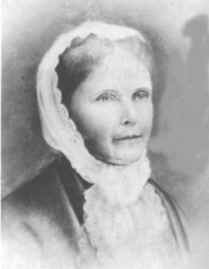Harriet Morrison Irwin facts for kids
Quick facts for kids
Harriet Morrison Irwin
|
|
|---|---|
 |
|
| Born |
Harriet Abigail Morrison
1828 Mecklenburg County, North Carolina, U.S.
|
| Died | 1897 (aged 69) Charlotte, North Carolina, U.S.
|
| Resting place | Elmwood Cemetery (Charlotte, North Carolina) |
| Alma mater | Salem College |
| Occupation | Architect |
| Years active | 1869–1871 |
|
Notable work
|
|
| Spouse(s) | James P. Irwin |
| Parent(s) |
|
| Relatives |
|
Harriet Abigail Morrison Irwin (1828 – 1897) was an American architect. She was the first woman in America to get a patent for an architectural design. On August 24, 1869, she received a patent for her unique hexagonal house design. This design was meant to improve how houses were built. Her husband and brother-in-law later started a company to build these special homes in the Charlotte area.
Contents
Harriet Irwin's Early Life
Harriet Morrison Irwin was born in 1828. Her father, Reverend Robert Hall Morrison, taught her at home. He was also the president of Davidson College. Harriet later went to the Salem Female Academy in North Carolina.
She had five sisters and four brothers. In 1849, when she was 21, she married James P. Irwin. They moved to Charlotte, North Carolina and had nine children. Later, they lived in a house that was built using Harriet's own hexagonal design. She passed away in 1897 and is buried in Elmwood Cemetery in Charlotte.
Designing a New Kind of Home
Harriet wrote for a magazine called The Land We Love. Her articles were about romance, history, and church topics. In 1869, Charlotte was building many new homes. This made Harriet interested in engineering and architecture.
She had been sick often throughout her life. This led her to design a home that would be good for someone who was not well. She got ideas from books and articles. She studied the works of Bindon Blood Stoney, an Irish engineer, and John Ruskin, an English architect. They believed that buildings should let in lots of fresh air and light. They also thought nature helped people's minds and health.
The Hexagonal House Idea
Harriet was also inspired by Orson Squire Fowler's book, The Octagon House: A Home for All. This book promoted houses shaped like an octagon (eight sides). However, Harriet decided that a hexagon (six sides) was a better shape. She thought hexagonal rooms could fit perfectly inside a hexagonal house.
On August 24, 1869, when she was 41, she received patent number 94,116 for her six-sided house design. Her patent highlighted how her design offered better lighting, improved airflow, and made better use of space. Even the rooms inside her house were six-sided.
To share her ideas, Harriet wrote a book called The Hermit of Petraea in 1871. In this book, she talked about her ideas on health and how living in a hexagonal home could make people feel better. That same year, she, her husband, and her brother-in-law Daniel Harvey Hill started a company. It was called the Hill and Irwin Land Agency and focused on building hexagonal homes. At least two of these houses were built in Charlotte, but they are no longer standing.
Her patent described the house in detail. It had a six-sided outside. Inside, it was divided into three smaller hexagonal rooms and several diamond-shaped rooms. These smaller rooms could be used for storage, stairs, or porches. A central chimney stack was placed where the three main rooms met. The house also had a mansard roof. Harriet believed her design used building materials wisely. She also thought a hexagonal building looked more beautiful than a standard rectangular one.
Harriet explained her design in her patent letter: "My invention is a house or other building that is hexagonal in shape. It has rooms inside that are hexagonal and diamond-shaped... It also has a chimney stack placed where the walls of the rooms meet. This chimney has flues connected to fireplaces in several rooms." She added, "The goals of my invention are to save space and building materials, to heat efficiently, to provide good lighting and airflow, and to allow for easy decoration."
Harriet Irwin's Lasting Impact
Harriet's hexagonal home design did not become widely popular. However, her work in architecture was very important. It opened the door for other women architects who came after her. One example is Louise Blanchard Bethune, who became the first professional woman architect in America.
In the mid-1800s, many women trying to enter architecture focused on designing homes. This was because people at the time thought women should focus on home and family. Harriet's work was a key step in helping women gain acceptance and respect in a field mostly seen as a job for men.
There is some discussion about how original her hexagonal plan was. Orson Squire Fowler had published a book in 1848 about octagonal houses. His book also talked about saving space, using fewer materials, and having good airflow. Harriet knew about the octagonal house trend. However, she insisted her design was completely new and different from Fowler's. Fowler's book was very detailed, with floor plans and construction guides. Harriet's patent, being a legal document, had fewer details.
Images for kids
See also
 In Spanish: Harriet Morrison Irwin para niños
In Spanish: Harriet Morrison Irwin para niños



